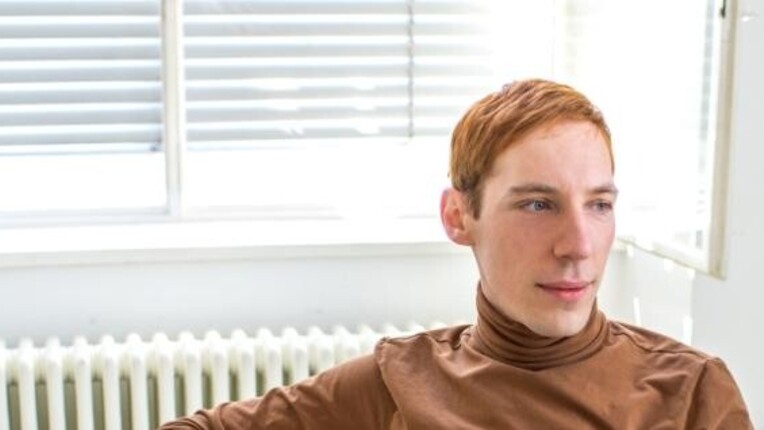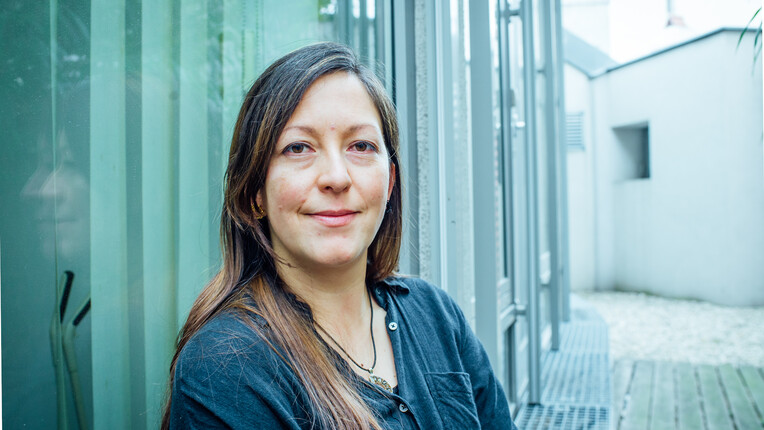
Roberto Uribe Castro
“My temporary sculpture ‘Overwriting History’ is a pedestal built with 200 old bricks produced in the late 19th century by Ziegelböhm. By choosing this material I connect various moments in the construction of Vienna by the hand of foreign labour.” Roberto Uribe Castro talks about his work, shown at AJNHAJTCLUB curated by Bogomir Doringer.
“My temporary sculpture ‘Overwriting History’ is a pedestal built with 200 old bricks produced in the late 19th century by Ziegelböhm. By choosing this material I connect various moments in the construction of Vienna by the hand of foreign labour.” Roberto Uribe Castro talks about his work, shown at AJNHAJTCLUB curated by Bogomir Doringer.
Like Joyce’s Ulysses or Cortázar’s Rayuela, to me cities are texts that have many ways to be approached and a variety of possibilities to be interpreted. The common way to get through to the story of a city and its inhabitants is through its buildings, streets, squares and parks; but it’s the hidden, the less obvious texts that have always got my attention.
The best way to describe my approach towards the topic of Gastarbeiter for the AJNHAJTCLUB exhibition can be found in the words of Walter Benjamin:
“He who seeks to approach his own buried past must conduct himself like a man digging. He must not be afraid to return again and again to the same matter; to scatter it as one scatters earth, to turn it over as one turns over soil. For the matter itself is only a deposit, a stratum, which yields only to the most meticulous examination what constitutes the real treasure hidden within the earth: the images, severed from all earlier associations, that stand – like precious fragments or torsos in a collector’s gallery – in the prosaic rooms of our later understanding.”
Follow the artist on instagram: @roberto_uribe_castro
www.robertouribecastro.de
I looked at the Vienna of the late 60s, when the Gastarbeiter left their homes (Turkey or Yugoslavia, in most cases) to come here. To me there are three key aspects of Vienna at that time:
- An imperial Vienna represented by the majestic buildings on the Wiener Ringstraße (ring road), like the Museum of Art History and the Museum of Natural History.
- What I call „the workers‘ Vienna“, spread in social housing and incredible city infrastructure, especially by the so-called “Rotes Wien” (“Red Vienna”).
- A WWII-Vienna represented by impressive bunkers all over the city.
Even though all of them had in common the use of foreign labour for their construction, imperial Vienna and the workers’ Vienna were tightly related by the story of the so called Ziegelböhm. These workers who came mainly from the Bohemian-Moravian highlands worked in the brick factories that produced the Bausubstanz (construction material) of most of the prestigious buildings along the Vienna Ringstraße constructed during the 19th century.
The precarious living conditions of the Ziegelböhm (also known as Ziegelbehm in dialect) in the southern part of the city came to light through the reportages of Victor Adler, one of the leaders of Vienna’s social democrat movement. His publications inspired movements like the Siedlerbewegung with members like Adolf Loos and new architectural ideas like Margarete Schütte’s Frankfurter Küche which aimed at improving the living conditions of such workers.
My temporary sculpture Overwriting History is a pedestal built with 200 old bricks produced in the late 19th century by Ziegelböhm. By choosing this material I connect various moments in the construction of Vienna by the hand of foreign labour. At the same time, I question the idea of identification through an architecture whose actual Bausubstanz comes from abroad. These bricks form many representative buildings of Vienna’s Ringstraße, and these buildings are precisely the same ones that the were rebuilt and reconstructed by workers invited to Vienna in the late 60s.
By cleaning each one of the bricks of concrete and sand and covering it with a layer of graphite, I acknowledge the singularity of each piece. I also erase one specific quality of these bricks: the colour. The graphite that covers them is a reference to the written contract between Austria and former Yugoslavia in 1966. The contract is a legal record of the traditional movement of workers that reflects today’s migration policies in many ways
My work addresses the fact that written history can still be reinterpreted or understood differently under a different light, by digging into the past and rearranging its parts into the future. I placed this ephemeral pedestal in the context of the exhibition AJNHAJTCLUB to question the idea of identity through symbols and to provide a base for future interpretations.
Roberto Uribe Castro, August 2016
#AJNHAJTCLUB
curated by Bogomir Doringer
Jul 06 thru Sep 04, Tue to Sun 13-16:00, 16:30-20:00
frei_raum Q21 exhibition space
#freiraumQ21 #artistQ21







